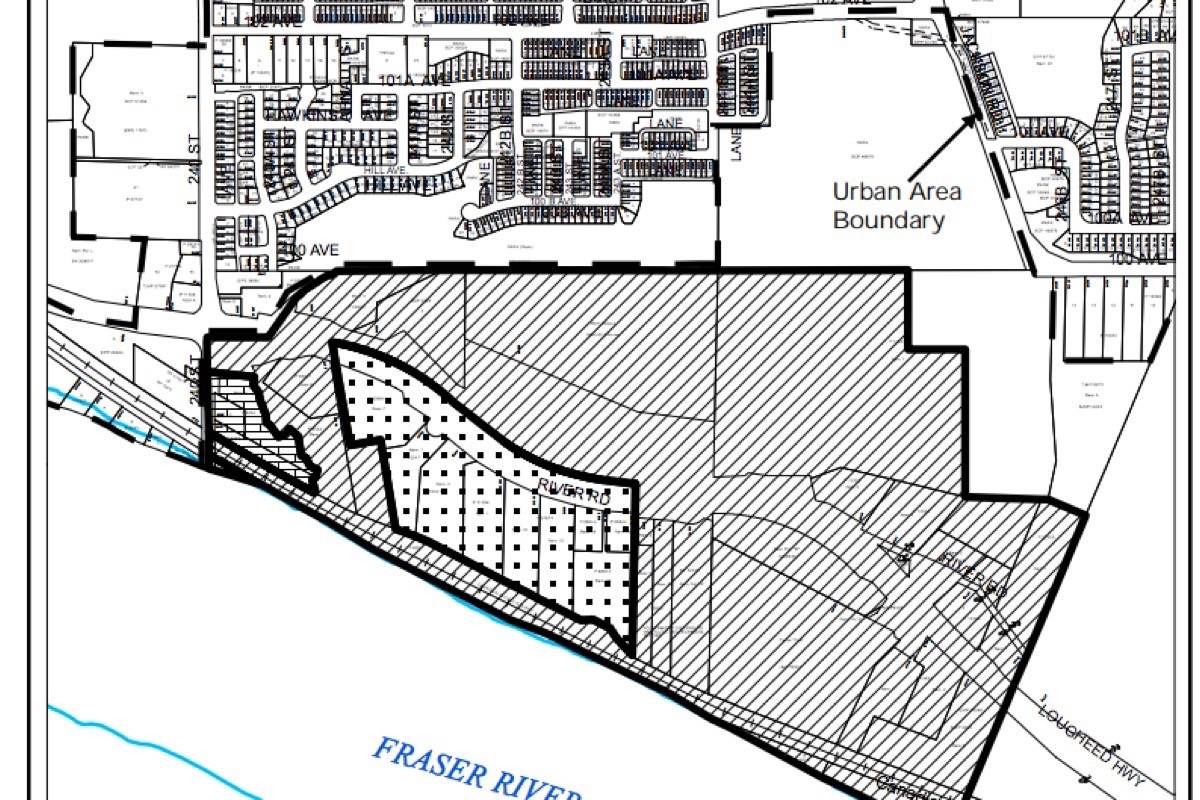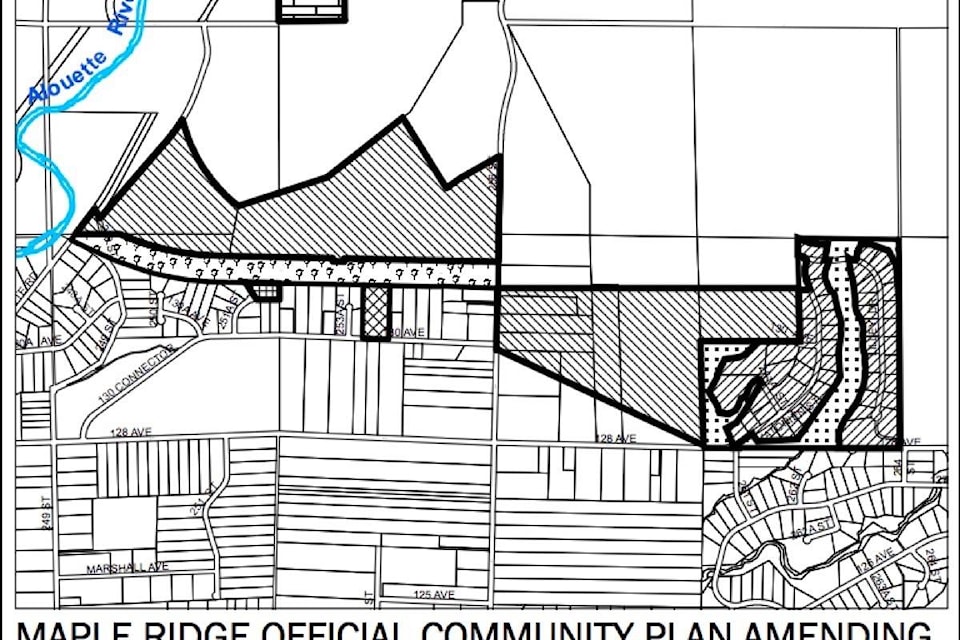A long-term plan to grow the number of local jobs as well as the tax base moved a step forward Tuesday, following third reading by Maple Ridge council.
Council OK’d plans to deem 234 acres along north 256th Street and along east Lougheed Highway as industrial in its official community plan.
But it could be decades before any new warehouses or business parks set up on the properties, providing rezoning is given and a way is found to build on steep terrain that comprises part of the future industrial reserve on the north side of Lougheed Highway, between 240th and 248th streets.
Coun. Craig Speirs pointed out that the extension of Abernethy Way east to 256th Street is a precondition for any development in the area of 256th Street and 130th and 128th avenues where the industrial reserve, totalling 198 acres, are proposed. “For me, this is a reserve. We don’t need residential up there but we do need employment lands,” Speirs said.
“I’m of the same mind,” said Coun. Gordy Robson. He said council has committed to not allowing development until Abernethy is connected to 256th Street to provide a second east-west road to the area, in addition to Dewdney Trunk Road.
The area, totally 36 acres along the Lougheed Highway, include an area with steep slopes and would be difficult to develop, pointed out Speirs. “There’s very little potential north of the Lougheed.” The lands along Lougheed Highway are made of two parts, the western portion that starts at 240th Street, and a smaller portion at 256th Street, on the other side of the Kwantlen First Nation reserve.
But land on the south side of Lougheed Highway will have “an amazing view of the Fraser River,” Speirs said, adding that he wants the corner of 240th Street and Lougheed to be a commercial corner. Creating an industrial reserve east of 240th Street is seen as a way of expanding the Albion Industrial Area.
“It’s a long-term OCP designation. It might be 30 to 40 years away from industrial development,” said Coun. Tyler Shymkiw.
Some on council though didn’t want the land on the south side of Lougheed Highway deemed industrial.
Couns. Robson, Corisa Bell and Bob Masse voted to have only the northern part of the land along Lougheed Highway preserved for industrial.
But Speirs, Shymkiw, Couns. Kiersten Duncan and Mayor Nicole Read voted to have the entire portion on both sides of the highway designated industrial.
“I think it’s really important that we set aside land for a long-term strategy,” said Mayor Nicole Read.
“Had we set aside more employment land a long time ago, I think we would have been set up for less difficulty than we have now,” trying to get more commercial and industrial property taxes.
People will be able to give their feedback on any future business proposals, she added.
A larger portion on the south side of Lougheed Highway could have been deemed industrial but that would have affected residents currently living along River Road. Instead, council agreed to designate their properties as rural residential, thus ensuring that use in the future.
A staff report also shows the potential increase in money flowing into the city from the higher taxed industrial lands.
If the current land use in the 256th Street area, a mix of suburban residential and institutional was maintained, the city would haul in $108,000 a year in property tax revenues, at build out.
But if the land use was changed to industrial use, with higher commercial tax rates, the city’s yearly property tax haul would jump to $181,000.
When it comes to property along Lougheed Highway, if both areas on either side of Kwantlen reserve remained residential, the city would make $91,000 a year, in residential property taxes, once build out was achieved.
But if the existing rural residences are maintained and 36 acres is developed for industrial use, the city would make $215,000 a year in taxes, almost three times as much.
Added up, once all the land is developed for industrial use, the city would make an extra $200,000 a year from the industrial or business taxes, compared to taxes produced by residential.
Creating more industrial land is a major goal from Maple Ridge’s Commercial and Industrial Strategy, written in 2014. It said the city has to find between another 170 to 230 acres within its borders in order to create local jobs and help with the regional demand for industrial land. Once developed, another 1,587 local jobs could be supported.
The industrial area along Lougheed Highway and the Fraser River could expand even further if the Kwantlen First Nation also decides to pursue similar development on its lands.

